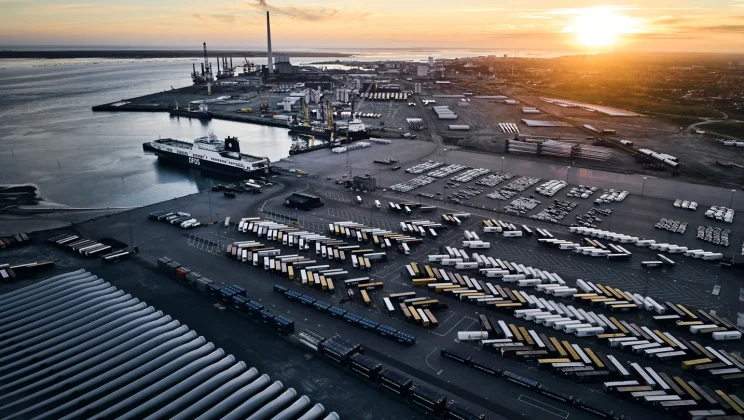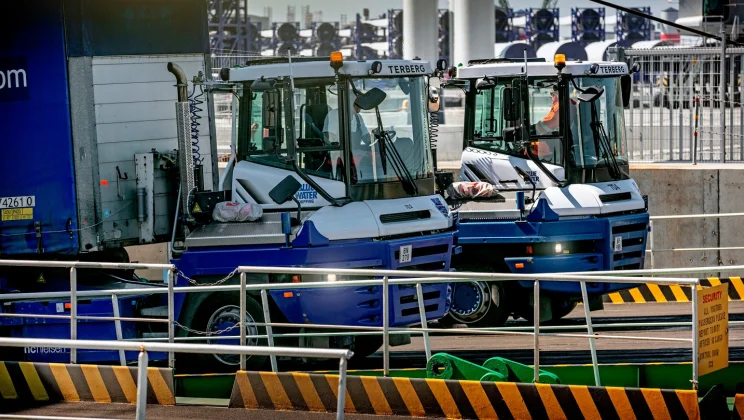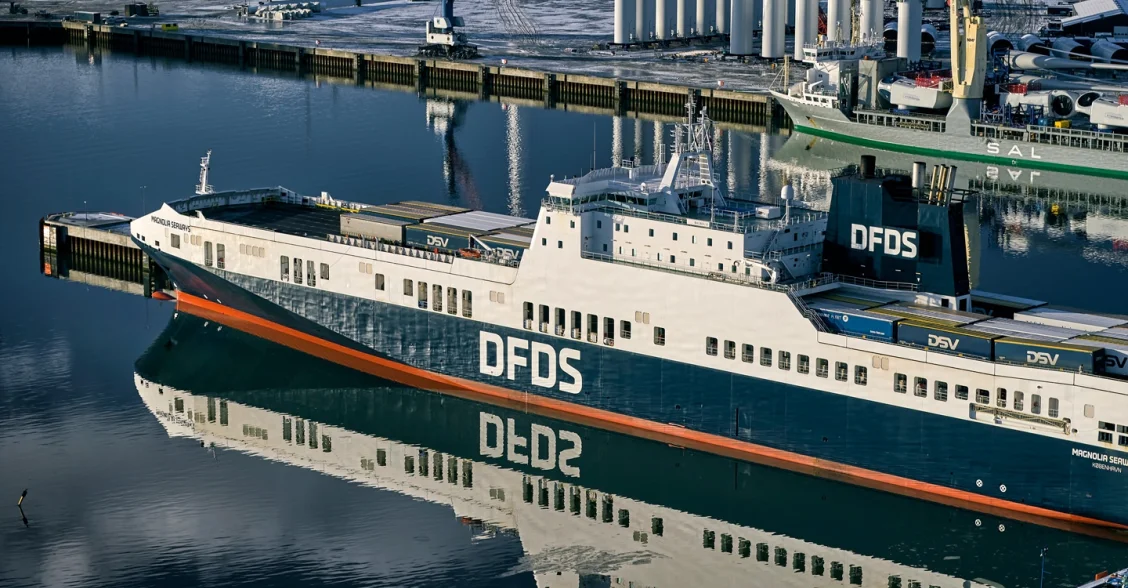DFDS is navigating a new reality after Brexit with more staffing and stricter procedures. But the British still want furniture and butter. And they get it.
It is now more than three years ago that Britain officially left the EU. Brexit has brought many changes to the transport and logistics industries, not least affecting DFDS, which operates the ferry service between Esbjerg and Immingham.
New customs rules, stricter and more extensive documentation requirements and changing trading patterns have put the industry to the test. But what is the situation today?
Sanne Thomsen, Route Director at DFDS in Esbjerg, explains how Brexit has affected the transport of goods – and how DFDS has adapted to the new reality.
The Brexit effect: the chaos is stabilising
Initially, Brexit caused great uncertainty in the transport industry. Many companies were concerned and hoarded goods in the period leading up to Brexit, which caused a temporary surge in freight volumes. But this was followed by a drop in volumes at DFDS, Thomsen explains:
“We saw a steep rise in freight volumes right up to Brexit, but then they plummeted. There was a quiet period for a few years, but now we’re back on track. Our vessels are full but the composition of cargo is slightly different,” she says.
Although trading patterns are stabilising, Brexit is still an administrative burden for carriers. Some companies have opted for alternatives to imports or modes of transport, while others have extended their delivery times to allow for the additional procedures.
Finding new paths and opportunities in the overall supply chain has posed great challenges.
“Many customers have had to add an extra 24 hours to their transport times because of the new obstacles caused by regulations and stricter security requirements. There is always something new to deal with,” Thomsen explains.

An aerial view of Port Esbjerg, with cargo ready to be loaded onto one of DFDS’ vessels.
Customs and documentation: a complex challenge
In the aftermath of Brexit, one of the greatest issues has been to navigate the new customs and documentation requirements. Previously, goods would move freely between Denmark and the UK. Now, all freight requires extensive customs clearance.
“It just never seems to end. New rules and systems are continually being introduced – most recently the DMS Import system, which is scheduled for implementation this year. The different customs systems are not always compatible, which leads to bottlenecks. Long response times and IT problems make it difficult to deliver the service we want to provide,” says Thomsen.
Document Management System (DMS) Import is the Danish customs authorities’ system for issuing customs documents. In the summer of 2024, DMS Eksport was implemented. Both systems are first steps towards standardised customs systems in the EU.
Despite these challenges, DFDS still manages to deliver goods. The companies that are best at handling the new requirements are those that invested in strong logistics solutions and solid customs expertise at the right time.
“The most successful companies are those that thoroughly familiarised themselves with the rules and secured good business partners. They have had a handle on their documentation from the start of the process, saving both time and money,” Thomsen explains.
Has Brexit changed transport patterns?
Although Brexit has made transport more burdensome, it has not fundamentally changed the need for transporting goods between the UK and Denmark. The British still want their bacon, butter and furniture, as was also the case in the past.
“We’re still seeing a steady demand for consumer goods, and some product groups that saw a slight decline are now on the rise again, for example furniture, interiors and pork,” Thomsen says.

Two trucks at Port Esbjerg transporting cargo onto one of DFDS’ vessels.
DFDS’ strategy: new teams and more checks
To meet the new challenges, DFDS has invested in the necessary resources. One of the biggest changes has been the establishment of a Border Compliance team to handle customs processes.
Before Brexit, DFDS did not have such a team. Four employees now work exclusively on preparing ship’s manifests and customs documents, and they work closely with the Danish Customs Agency to be able to serve and support the day-to-day operations across the business which are affected by Brexit and the new requirements.
“We have a great responsibility as a company. We look after an important border for goods between the EU and the UK,” says Thomsen.
The number of employees in DFDS’s operations in Esbjerg has risen from 9-10 people before Brexit to 14 people today. DFDS needs the extra pairs of hands to ensure that all goods are properly registered and that any checks are handled quickly and efficiently.
The future of the Esbjerg-UK route
Although DFDS has adapted to the Brexit reality, there are no plans to expand the route between Esbjerg and Immingham for the time being.
“We still carry the majority of cargo shipped to the UK, so it would take a lot of extra volume before we would expand capacity. We have slow periods as well as busy periods where capacity is challenged, for example in the time leading up to Christmas where we do an extra weekly round trip,” Thomsen explains.
Larger vessels or additional departures would require a significant increase in volumes, and DFDS does not expect to see such an increase in the short run.
“We always explore opportunities, but the fixed costs of an idle ship are high. We must see steady growth in volume before we can take the next step,” says Thomsen.
A new normal – but more obstacles ahead
Brexit has made the day-to-day operations in the transport and logistics industries more complex, but DFDS has adapted to the new conditions with more staff, streamlined processes and a close dialogue with customers.
“We’ve found a new normal, but we’re also aware that new requirements and systems are constantly being introduced. Brexit is not a completed process – we’re continuously adapting,” says Sanne Thomsen.
Go to overview

